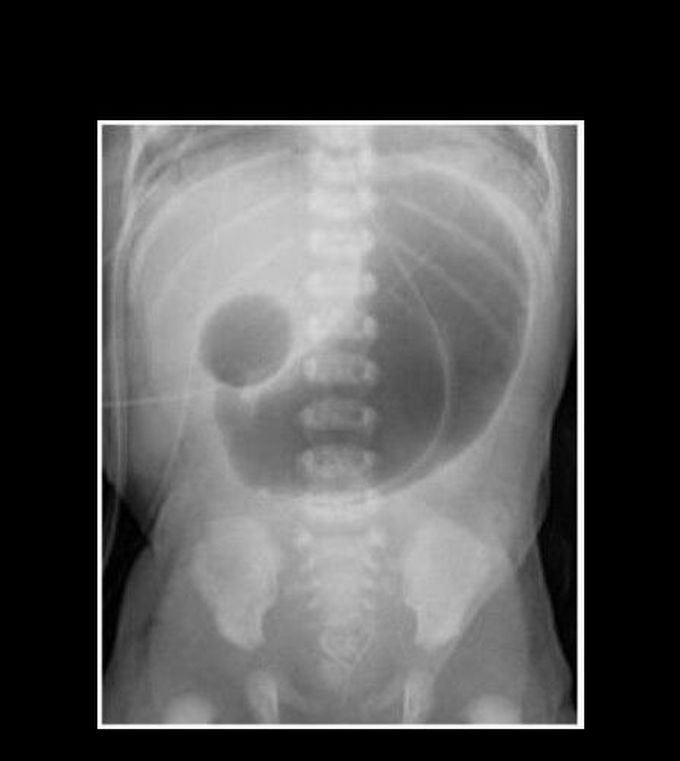

Fatma R. Badrover 1 year ago

Duodenal Atresia
Radiography shows a distended stomach and distended duodenum, which are separated by the pyloric valve, a finding described as the double-bubble sign. This is characteristic of Duodenal atresia, also known as duodenojejunal atresia. The air is trapped in the stomach and proximal duodenum, which are separated by the pyloric sphincter, creating the appearance of two bubbles visible on x-ray. Duodenal atresiais the congenital absence or complete closure of a portion of the lumen of the duodenum. It causes increased levels of amniotic fluid during pregnancy (polyhydramnios) and intestinal obstruction in newborn babies.
Other commentsSign in to post comments. You don't have an account? Sign up now!

